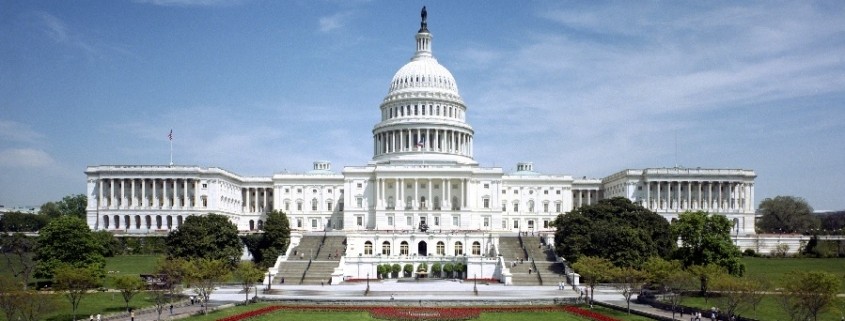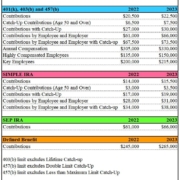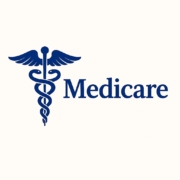The SECURE Act 2.0 Brings Big Changes to Retirement Accounts – Part 2

Money Matters – Skloff Financial Group Question of the Month – February 1, 2023
By Aaron Skloff, AIF, CFA, MBA
Q: We read the articles ‘The SECURE Act Brings the Biggest Changes to IRAs Since Their Inception’ Part 1, Part 2, and Part 3, and ‘The SECURE Act 2.0 Brings Big Changes to Retirement Accounts’ Part 1. We have large retirement accounts, so we are concerned about paying unnecessary taxes. How can we optimize our taxes and our beneficiaries’ taxes?
A: The Problem — The SECURE Act 2.0 Changes Estate Planning, Financial Planning and Tax Planning
The SECURE (Setting Every Community Up for Retirement Enhancement) Act 2.0 became effective on January 1, 2023. It secures and enhances the government’s coffers, as it complicates your estate planning, financial planning and tax planning. Let’s review the key components of the SECURE ACT 2.0 below.
Click Here for Your Life Insurance Quotes
The Solution – Understanding Key Components of the SECURE Act 2.0
7. Matching Contributions for Student Loan Payments. Beginning in 2024, employers offering 401(k), 403(b) and 457(b) plans can make matching contributions to employees for certain “qualified student loan payments” made by employees for higher education expenses and have the matching contributions treated as regular matching contributions for discrimination testing. This makes it easier for employers to provide employer-matching contributions to employees who are paying off student loans instead of making retirement plan contributions.
8. Creating SIMPLE Roth IRAs and SEP Roth IRAs. Beginning in 2023, employers can offer participants the option to elect some or all of their employee and employer contributions as SIMPLE Roth IRAs or SEP Roth IRAs.
9. New Qualified Retirement Plans Auto Enrollment. Beginning in 2025, new 401(k) and 403(b) plans would be required to include (unless the employee opts out): (1) automatic enrollment at a minimum contribution of 3% (maximum of 10%), and (2) automatic escalation of the contribution rate by 1% per year. For safe harbor plans, the cap on auto escalation would be 15%. For non-safe harbor plans, that would be 10% before 2025 and 15% after that. There are exceptions for governmental plans, church plans, and new and small business plans.
10. New Qualified Retirement Plans Tax Credit. Beginning in 2023, employers with up to 50 employees that implement a new retirement plan may qualify for an annual tax credit for up to three years equal to the lesser of: (1) 100% of the administrative cost of establishing the plan, or (2) $5,000. The SECURE Act 2.0 also establishes a new tax credit for contributions made by small employers to a new retirement plan (excluding a defined benefit plan). The new tax credit will be a set percentage of the amount contributed by the employer for employees up to a per-employee cap of $1,000. The set percentage is 100% for years 1 and 2, 75% for year 3, 50% for year 4 and 25% for year 5. The full amount of the new tax credit would be available to employers with 50 or fewer employees but phases out for employers with 51 to 100 employees.
11. 529 to Roth IRA Rollovers. After 15 years, 529 plan assets can be rolled over to a Roth IRA in the beneficiary’s name. The annual rollover limit is that year’s Roth IRA contribution limit, less all Traditional and Roth IRA contributions made by the beneficiary in that year. Contributions and earnings over the last 5 years cannot be rolled over. The lifetime rollover limit is $35,000.
12. Incentives to Join Employer Sponsored Retirement Plans. Beginning in 2023, employers can provide employees “de minimis financial incentives” such as a gift card to join an employer sponsored retirement plan.
Action Steps — Work Closely with a Registered Investment Adviser (RIA) to Review Your Employer Sponsored Retirement Plan and Your Induvial Retirement Account
The SECURE Act 2.0 introduces many new requirements, and many options employers can offer. It also brings many new choices participants should evaluate, yet not necessarily utilize. Work closely with an RIA to review your plan and individual account to optimize your estate, retirement, tax and financial planning strategies. Implement the solutions described above based on your unique circumstances.
Aaron Skloff, Accredited Investment Fiduciary (AIF), Chartered Financial Analyst (CFA), Master of Business Administration (MBA) is CEO of Skloff Financial Group, a Registered Investment Advisory firm specializing in financial planning, investment management and benefits for small to middle sized companies. He can be contacted at www.skloff.com or 908-464-3060.












